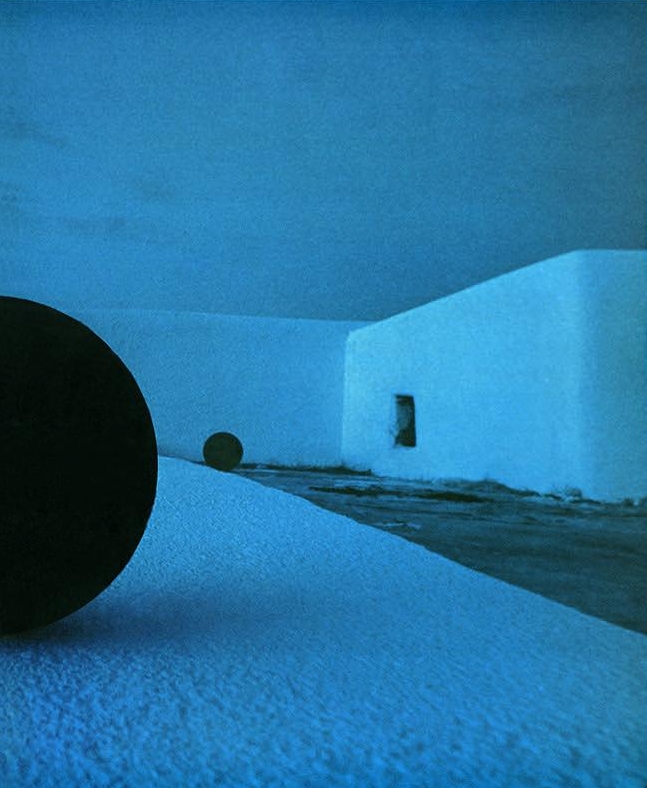A Unique View of the Landscape

Two decades after his death, photographer Luigi Ghirri's legacy has taken on increased significance. This week we take a look at his photography, ECM Records, and The Old and New Dreams Band.
Luigi Ghirri
Ghirri was an Italian photographer born during WWII, and the scenery of Italy remained his main focus throughout his career. This may have contributed to the reasoning behind why Ghirri was not better known outside of Italy. His work from the 1970s followed a similar aesthetic to American photographers in the New Topographics group, such as Stephen Shore, as well as other landscape photographers like William Eggleston. While Shore and his contemporaries had their work exported to audiences outside of the U.S., the same paradigm did not hold true for Ghirri, who has long been held in high esteem in Europe but only recently been celebrated in North America. Perhaps the lack of recognition inspired him, at least in part, to collaborate on the creation of a tiny, but important, publishing house called Punto e Virgola. Along with his wife Paola Borgonzoni and another photographer Giovanni Chiaramonte, the group focused on publishing exciting new photographic works as well as writing about photography.
A Unique View of the Landscape
The fact that Ghirri is often described via the comparison to American photographers is most likely a product of Anglo-centrism, as his work does differ in some ways from his contemporaries across the ocean. An often quoted declaration of Ghirri's is his desire "to distinguish the precise identity of man, things, life, from the image of man, things, and life." This meant that in addition to capturing deadpan, witty snapshots of everyday scenery in Italy, the photographer was also finding or creating views that compromised or confused our understanding of man-made versus natural scenery, and at times even our basic understanding of foreground versus background. Ghirri's work continues to ponder how we perceive the natural world around us, how humans try to create their own artificial worlds to exist within, and how these two paradigms create unresolved situations. While his entire body of work remains complex and broad, a few series in particular give a good sense of his unique view of the landscape: Kodachrome (1978), and Atlante (1973).
Luigi Ghirri, Marina di Ravenna, 1986, from “Paesaggio italiano”
Luigi Ghirri, Bologna, 1973
Luigi Ghirri, from the Kodachrome series, 1970s
Luigi Ghirri, Salisburgo, 1977
Playing
Ghirri's photography was used for the 1981 album Playing on the German label ECM Records. The overall design was created by Barbara Wojirsch, who was principally responsible for the look of ECM album art in the 1970s and early 1980s (more about Wojirsch in upcoming posts). The artists on the recording called themselves Old and New Dreams, which was appropriate in that they were essentially Ornette Coleman's quintet group, but now sans Coleman. They played many of Coleman's compositions in addition to their own, making them a pretty even mix of their old repertoire and their new directions in music. The quartet only produced four albums (two on Black Saint and two on ECM) and Playing consists of a live concert recording from the group's performance at Theater am Kornmarkt, Bregenz, Austria in June of 1980.
Don Cherry's composition "Mopti" from the album Playing









